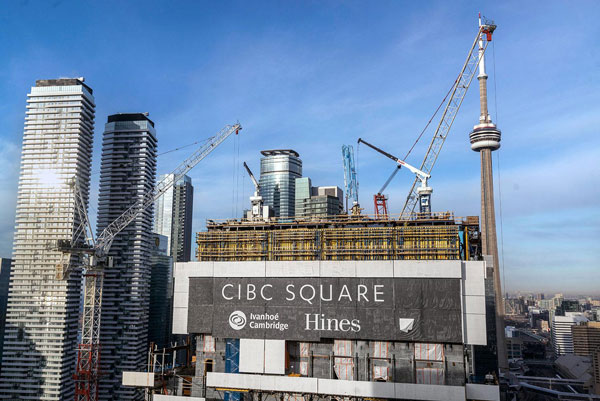Constructing tall buildings in tight urban spaces poses several challenges, including the ground level disruption caused by traditional craning. Innovative solutions that not only address these challenges while simultaneously increasing the speed and efficiency of construction are required.
Austrian-based engineering firm has developed several highrise formwork shifting solutions, including a system of self-climbing table lifts that eliminate traditional crane lifts between level-to-level transitions.
These are being used on the construction of what will be Detroit’s second-tallest building, a 209-metre tower that forms the hub of a new development at the former site of the .
A Doka self-climbing Table Lifting System (TLS) spanning a total of 21 metres was specifically designed to lift slab formwork across six levels of the Hudson tower.
The hydraulically-driven TLS not only increases efficiency of material hoisting, but also helps improve safety.
By makÂing the crane unÂneÂcesÂsary for both the horÂiÂzonÂtal and verÂtiÂcal reÂpoÂsiÂtionÂing opÂerÂaÂtions, Doka “shifting devices” simÂpliÂfy and opÂtiÂmize the loÂgisÂtics for the enÂtire site by doÂing away with unÂproÂducÂtive and costly waitÂing times.
“Doka’s personalized Table Lifting System enabled us to operate the construction site without the use of crane lifts between level-to-level transitions, which helped us to optimize construction speed,” said Brian Gulick, superintendent with project builder .
Doka engineers at the company’s Austrian head office worked with their American counterparts to analyze potential suspension points of the climbing systems for the core and slabs and to detect and prevent possible clashes onsite by re-co-ordinating the schedule in advance.
This early collaboration resulted in solutions tailored to meet the specific demands of the local construction environment in Detroit and allowed the project to stay on schedule.

While Doka systems have been on major infrastructure projects such as , it is the application of the company’s formwork shifting technology that has helped unlock the development potential within şÚÁĎłÔąĎÍř’s busiest cities.
In downtown Toronto, the first of two towers of the three-million-square-foot , next door to Scotiabank Arena, opened in 2021. It’s been the “most advanced tower ever constructed in şÚÁĎłÔąĎÍř.” Doka systems were a key part of the project.
The 49-storey, 1.5-million-square-foot building was constructed using Doka’s self-climbing gantry that climbed 1.6 storeys at a time while suspending the core walls.
It was difficult to access climbing systems and platforms at different stages. A 7.1 metre custom Doka Super Climber SCP (self-climbing platform) was the solution for the 6.83 metre lifts required for the core walls.
The Doka Super Climber raised the entire core formwork hydraulically independently of the crane. During construction, the cycle time varied, depending on the area. Low-rise used a seven-day cycle time, mid-rise a five-day cycle time, and highrise a four-day cycle time.
The Super Climber ap- proach was also used in downtown Winnipeg for the construction of a 42-storey condominium that featured a design of changing core geometry and steel/precast members.
This helped overcome several site challenges, including limited crane time and lay down area for staging materials, and a location that was cold and windy.
“Super Climber allowed the core and placing boom to climb completely automatically,” Doka şÚÁĎłÔąĎÍř .
The system used eight single stroke cylinders to move the core with forms, concrete placing boom, and multiple levels of working platforms up to the next casting step.
An integrated protection screen of foam insulted trapezoidal metal sheet maintained temperature during the winter months.
In Vancouver, a unique waffle patterned slab edge and non-repeating column layout was designed by IBI/HB Architects for the 54-storey residential project completed in 2022.
This called on Doka’s climbing platforms that attached to rolling tracks on rollback brackets in order to reposition the columns horizontally for each pour.
The development of these innovative lifting and positioning devices go beyond the capabilities of traditional craning and result in the creation of stunning new buildings in tight urban settings.
John Bleasby is a Coldwater, Ont.-based freelance writer. Send comments and Inside Innovation column ideas to editor@dailycommercialnews.com.




Recent Comments
comments for this post are closed